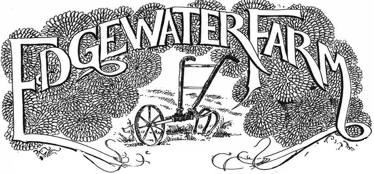Melons, corn ,potatoes tomatoes and large sweet onions for French frying …the whole enchilada. The grazing is pretty good around here at mealtimes. It also means that its been awhile since I blogged.
Climate change. Same old shit, different blog. Although we have been blessed with some rogue showers since the end of July that has kept our crops going, many of my friends have not. Skip and Liz down on the Rhode Island coastline had burned up until last weekend with less than .5 of an inch of rain since June 1st,. That maybe adequate moisture for cactus and agave, but certainly not helpful to a vegetable farm. And on our sea coast Heron Pond Farm and Brookdale Farm in Hollis continue to bake. We have been funneling some tomatoes and strawberries through the Three Rivers Alliance this season and I have journeyed to Kingston a couple of times and even with the recent fronts moving through they remain rainless. That’s tough stuff, financially and emotionally. There but for the Grace of God goes Edgewater Farm. This time, anyway….
Further evidence of a warming climate is that we normally wrap up our blueberry harvest around August 20th. This year we leased an acre of blueberries on a colder site across town, in the hopes we would be able to supply the Coop and farm stand with blueberries through Labor Day. This year with the sun and intense heat and and the strong demand we were through picking everything we had access to by the 15th of August! More evidence that climate is experiencing wild fluctuations. That intense heat has flavored this year, driving the Brix content way up (brix being a measurement of the sugars in fruit and vegetables). Tomatoes, corn and melons have especially profited.
The pandemic has exacted a bit of emotional toll and inconvenience on folks here at the farm, but everybody who works the farmstand has settled into our routine and just deals with it in a resigned and cheerful way. I am reminded by the others when I am found maskless where I shouldn’t be. The patrons have settled in as well. We had some trying moments with contentious individuals when we first opened, and for the first time I had the police serve an order to keep a patron away from the premises. I think it is fair to say that the tedious impact of this pandemic coupled with a trickle down effect of behaviour patterns from our federal government plays into people feeling a need to drop with simple common courtesy and respect. So we had to drop engaging discourse over the issue. In the end it was just easy to say ‘our way or the highway..’
With the shortening days comes the advent of fall. The prospect of not seeing another 90 degree day for a year or so has the field crew back to bringing more layers of clothes to work, a brisker step in their pace and the return of a little bit of joking and enthusiasm to “getting it done”. The onions are coming in by the truck loads, which is a pleasant surprise after last years disappointment. So successful a crop that we are beginning to wonder how we are going to be able to get them dried off and where to store them! (Not a bad problem to be faced with, mind you..) All though we still have some things in the greenhouse that will get transplanted out (broccoli, cabbage, table greens, radish..) the winter cover crops are starting to go in. Late yesterday afternoon I took off on a tractor to sidedress (fertilize) some fall carrot patches and as I traveled up Route 12A I could seed some red leaves on the bottom of the swamp maples, a harbinger of fall.
I too really enjoy this time of year. As I went about the fields in the evening twilight, it was a simple matter of adding a non restrictive sweatshirt to achieve maximum comfort. The air was fresh, the sky cloudless. And despite some impending shoulder surgery, I felt the best I have in months..

























